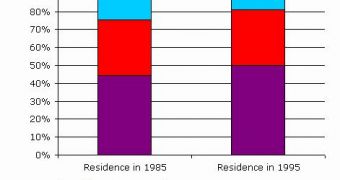A long time ago, population movement specialists with the U.N. were arguing that the world was facing its largest migration to date. Millions were giving up their lives in their native countries only to start over somewhere else. New statistics show now that density is the main reason why people tend to leave their homes while, on the other hand, the population number is the main thing that attracts immigrants.
According to Marta Roig of the United Nations Population Division in New York, there are currently over 228 origins and some 195 destinations for immigrants. Although the numbers seem balanced, there still are 30 countries more that, theoretically, are left by immigrants, never to return. Imagine a state the size of the U.S. or the Russian Federation that only sends people away, without letting anyone in.
In fact, this survey shows that developed countries are primary targets for the flow of immigrants coming from all over the third world. However, people arriving in Europe or America are not drawn here by the density of the population major states have, but by the large number of people who inhabit these countries. More people equals more opportunities.
The reason why this U.N. Assessment is so important is that the current migratory tendency seems to be gathering momentum, with countries like China and India spilling wave after wave of workers and refugees. For example, in a few decades, the current ethnic structures of traditionally conservative states, such as France or Italy, may become unbalanced, as more and more Maghrebians enter these countries each year.
Generally speaking, millions of people worldwide try out their luck in foreign countries, mostly because they think that greater opportunities await them outside their native borders, but also because some wish to assimilate various cultures and behaviors throughout the planet. Nowadays, migration is not so much about escaping persecution as it was centuries ago. Countless Indian families now lack a father figure, after working men moved to construction sites in Europe and the Middle East, for a chance to make a decent living.

 14 DAY TRIAL //
14 DAY TRIAL //